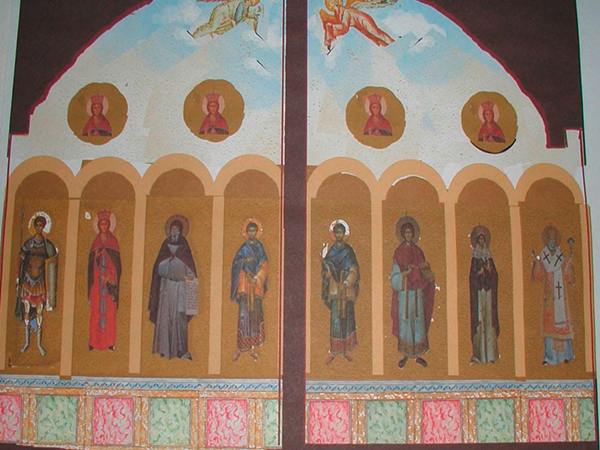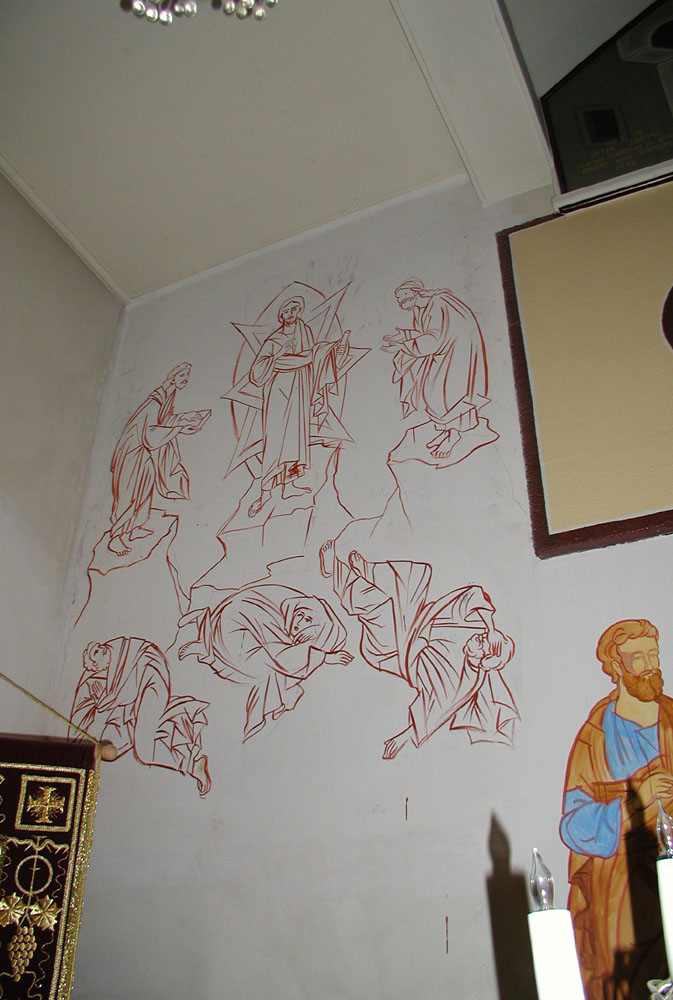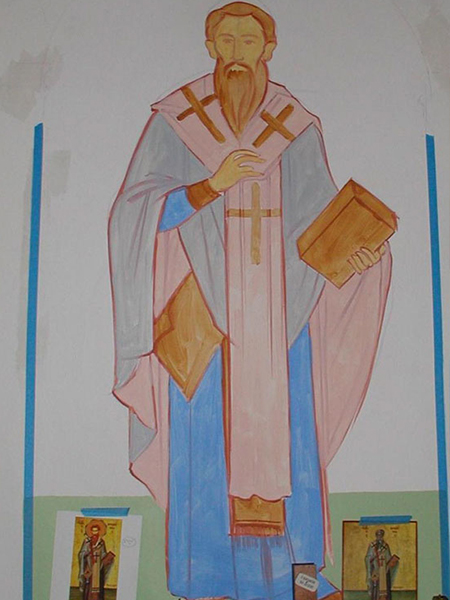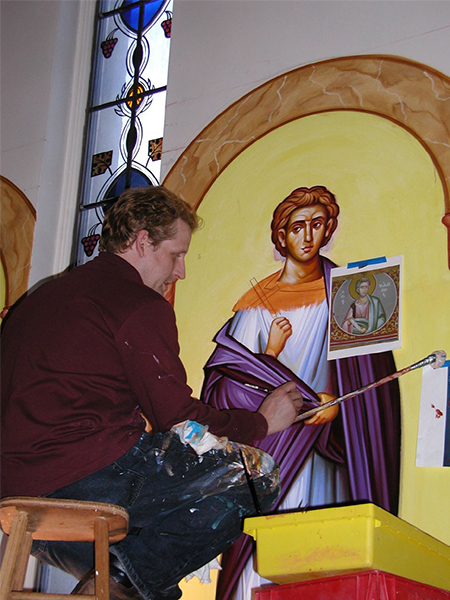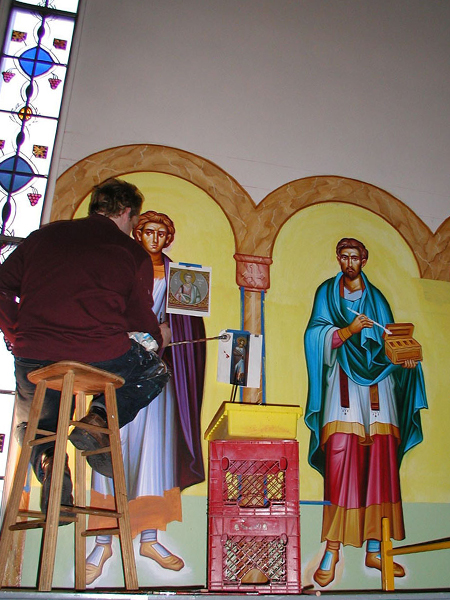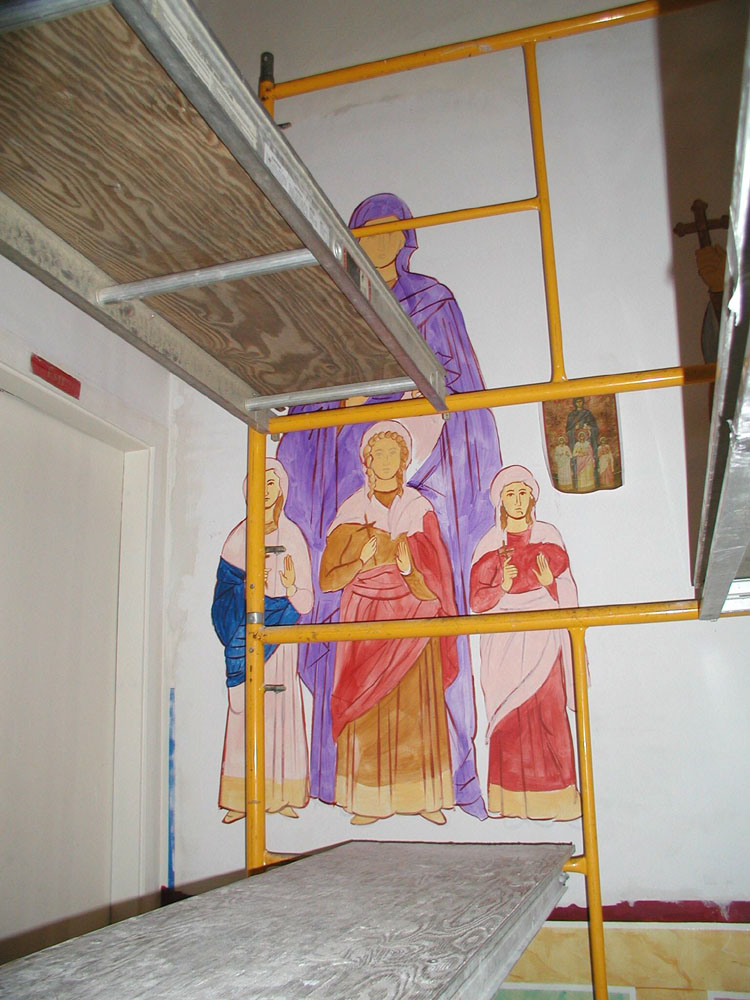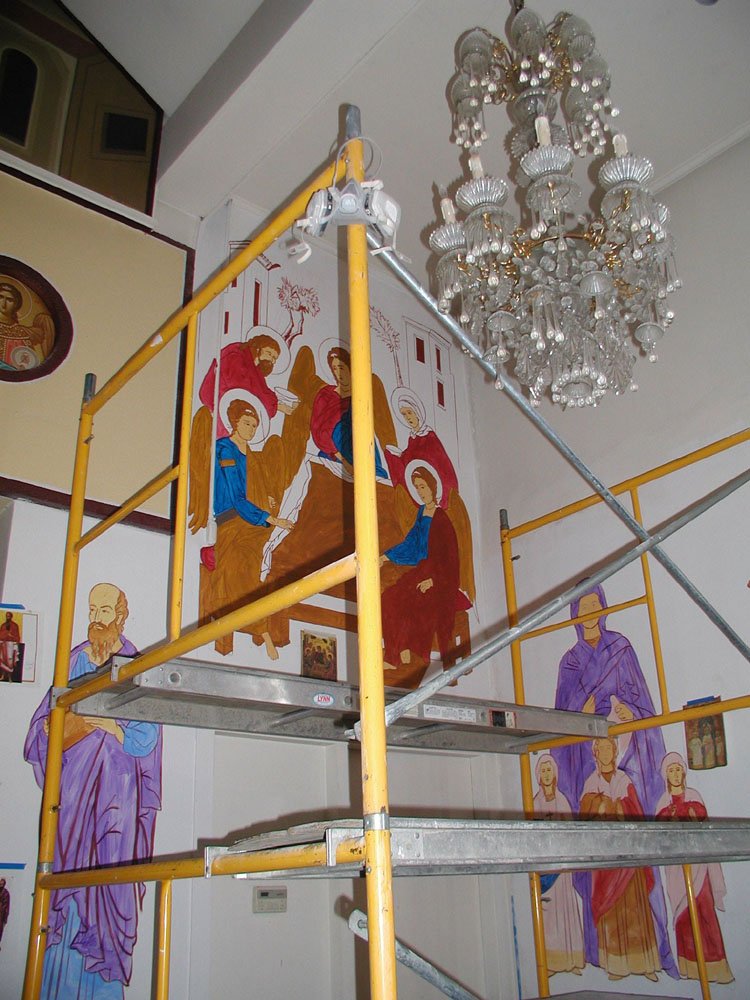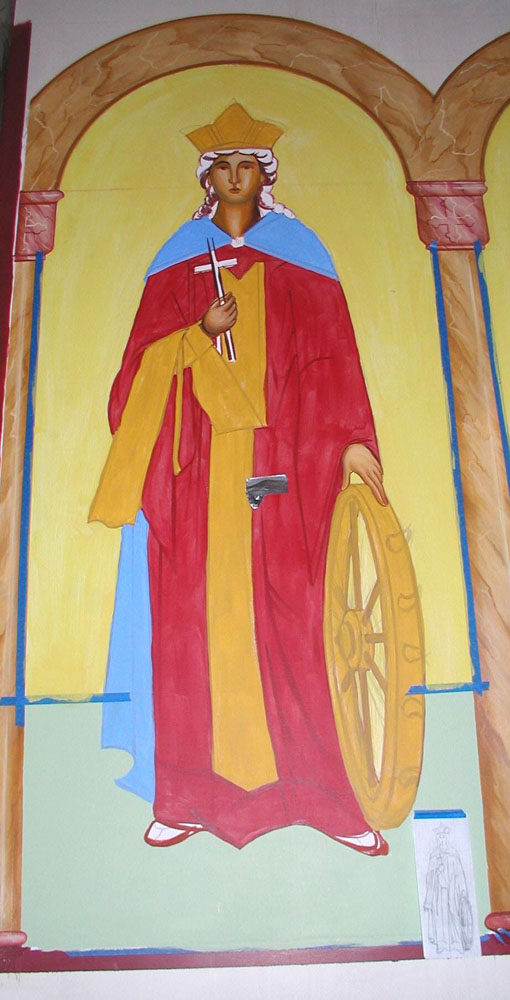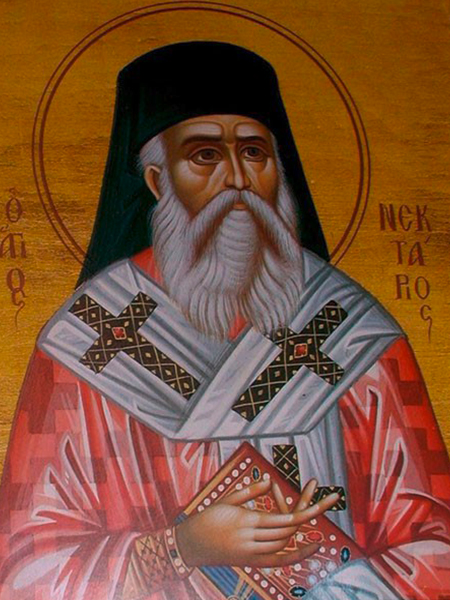The Plan in 2000 for New Iconography
The original plan included adding 16 life-sized icons of Saints on the left and right Nave walls of the church. In addition, three icons of St. Haralambos, St. Nectarios and St. Sophia and Children are located on the right wall next to the Bishop's throne in the Solea.
Directly across, on the left wall are three additional life-sized icons of St. Nicholas, St. Basil and St. Andrew. Above the large icons of Saints, medallion icons of other Saints were added.
High above on the front Solea walls on the left and right of the iconostasis are icons depicting the Baptism of Christ, the Transfiguration and the Hospitality of Abraham. On the ceiling over the Altar is the icon of the Ascension.
Finally, immediately to the left and right of the iconostasis are icons of Saints Peter and Paul, respectively. On the rear walls are large icons of the Nativity and of the Dormition of theTheotokos. Photographs of the icons are shown in later pages.
Renderings of the icons were first prepared showing how they would appear on the walls, as shown here. The North and South walls of the church have eight icons each; four on each side of a vertical window, another 10 icons are in the Solea and two on the rear walls.
The initial plan had a total of 30 icons, but additional icons were added with medallions above the side- and front-wall icons as well as two other icons in the ceiling.
Completing the plan was the painting of sky and icons of angels above the north and south icons in the Nave, as depicted in the rendering on the left.
First Steps in the Iconography Process
The beginning work includes hand tracing a magnified image of each of the icons on paper to scale the actual sizing of the icon. The sketch is used as a beginning pattern for the new icon.
The sketch is then transferred to canvas and glued to the wall. Use of canvas allows for removal of the finished icon from the wall if the wall structure is changed in the future and requires moving the icon. Such a sketch is shown below.
Sometimes, for very large icons, a magnification projector is used to project the the image of a small icon directly on to the canvas, where it is then traced on the canvas (shown below).
As a guide, an completed copy of the icon is used for reference.
Beginning the Painting
With the sketch in canvas in place on the wall, the painting begins. Again, a copy of the replicated icon (shown taped to the wall) is used for reference.
While the sketch appears almost cartoon-like, it will soon begin to take on the style characteristic of Byzantine artwork: elongated fingers and feet; elongated ears and nose, enlarged eyes and long, draping colorful robes.
The icon itself is both a copy and an interpretation of the original, with the creativity and imagination of the iconographer making each icon unique.
The artwork continues, with the application of oil paint and shading on the icon. Here, iconographer Michael is applying shading to the robe of St. Phillip.
This process painstakenly continues until the icons begin to take on a lifelike appearance. Scaffolding is needed to reach high parts of the walls, as the icons are over five feet tall and some are on walls over 20 feet high.
